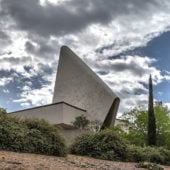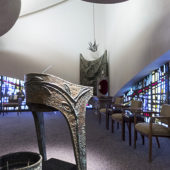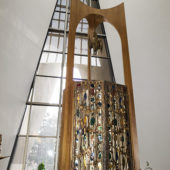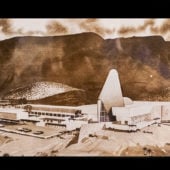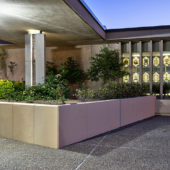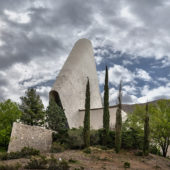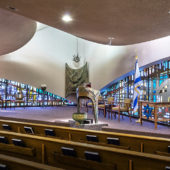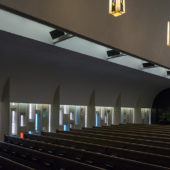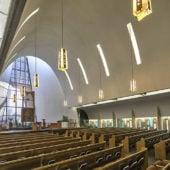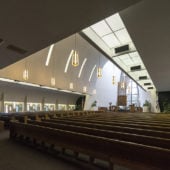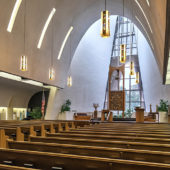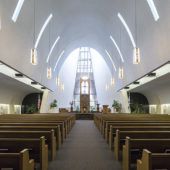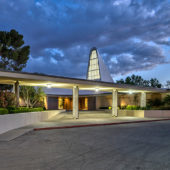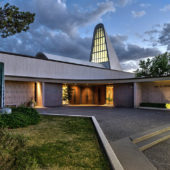This iconic structure is an El Paso landmark.
Founded in 1898, with antecedents as a cemetery association going back another decade, Temple Mount Sinai has a rich history. The Temple has had three homes since 1898. Its first, which was occupied from 1898 until 1916, is no longer in existence. The second, an impressive structure at the corner of Oregon and Montana, now houses offices of the El Paso Community College. Some of the stained glass from that building has been incorporated into its current home, but much is still in place at the old Temple. Since 1962, Temple Mount Sinai has occupied an iconic, modernist building designed by noted Los Angeles architect Sidney Eisenshtat.
At Temple Mount Sinai the Ark is a giant open tripod inside a soaring, tent-like concrete sanctuary; one writer has commented that this building “with its soaring arched shell seems to spring out of the rocky Texas soil” and gives the congregants a view of the mountains “through the high glazed arch behind the Ark.” This building is also featured in the book American Synagogues by noted architecture critic Samuel D. Gruber, where it is described as “a dramatically sculptural building perfect for its austere setting.”.
Quoting Wikipedia:
Sidney Eisenshtat (June 6, 1914 – March 1, 2005) was an American architect who was best known for his synagogues and Jewish academic buildings. It was not until 1951 that he designed his first major religious structure, Temple Emanuel of Beverly Hills, California. Eight years later he designed the landmark Sinai Temple on Wilshire Boulevard in the Westwood district of Los Angeles, a building that has been compared to the work of Frank Lloyd Wright and which is distinguished by its use of stained glass windows.
Eisenshtat said that his concept of synagogue design was based on his perception that, unlike in some religions, “in Judaism there is no intermediary. Therefore, I see the structure for synagogues not as pyramidal but as horizontal.” Eisenshat was noted for a use of expressive forms in thin shell concrete, white walls, simple materials, and natural light.

